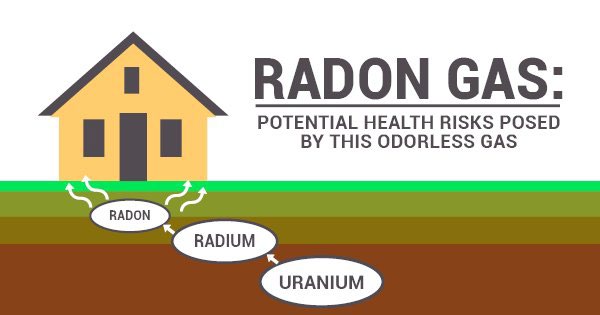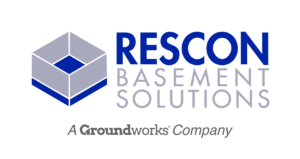What is Radon?
Apr 25, 2024
What is Radon?
Radon is a naturally occurring radioactive gas that comes from the decay of uranium in soil and rock. It can enter homes through cracks in foundations, gaps around pipes, or well water. Due to its colorless and odorless nature, radon is undetectable without proper testing equipment. Exposure to high levels of radon over time can increase the risk of lung cancer, making it crucial to monitor indoor levels regularly. Understanding what radon is and where it comes from is essential for taking necessary precautions to safeguard your home’s air quality. Contact Rescon Basement Solutions for more radon information!
Sources of Radon Exposure
Radon, a colorless, odorless gas, can seep into homes through the soil or rocks underneath. The primary source of radon in indoor air is the natural breakdown of uranium in soil, water, and rock. As this radioactive gas moves up through the ground and finds its way into buildings through gaps and cracks in foundations or walls, it can accumulate to dangerous levels.
Additionally, well water containing radon can release the gas when used for activities like showering or washing dishes. Homes with private wells may be at higher risk of radon exposure if proper testing and mitigation measures are not taken.
Testing Your Home for Radon
When it comes to radon, testing your home is crucial. Short-term tests provide a snapshot of radon levels over a few days, while long-term tests offer a more comprehensive view over several months. By conducting these tests, you can determine if your home has elevated radon levels that may pose health risks to you and your family.
Testing for radon is simple and affordable, with DIY test kits readily available or professional services for more accurate results. It’s a proactive step towards ensuring the safety of your living environment and taking control of potential radon exposure risks.
Short-term Testing vs. Long-term Testing
When it comes to testing your home for radon, you have two main options: short-term testing and long-term testing. Short-term tests typically last from 2-90 days, providing a quick snapshot of radon levels in your home. On the other hand, long-term tests run for more than 90 days, offering a more comprehensive look at average radon levels over time.
Short-term tests are great for initial screenings or real estate transactions when time is limited. However, long-term tests give a more accurate representation of radon exposure in your living space. Consider the pros and cons of each before deciding which test is best suited for your needs.
Signs of High Radon Levels
When it comes to radon exposure, being aware of the signs of high levels is crucial. One potential indicator is the presence of physical symptoms like a persistent cough, chest pain, or difficulty breathing. Additionally, if you notice frequent headaches or dizziness without any apparent cause, it could be worth investigating radon levels in your home.
Another subtle sign to watch out for is an increase in allergies or respiratory issues among family members that seem to have no other explanation. Keeping an eye out for these warning signals can help you take proactive steps towards ensuring a healthier living environment for yourself and your loved ones.
Health Implications of Radon Exposure
Radon exposure can have severe health implications that shouldn’t be ignored. Prolonged exposure to high levels of radon gas increases the risk of developing lung cancer, especially for non-smokers. This invisible threat is the second leading cause of lung cancer after smoking, making it crucial to address elevated radon levels promptly.
Breathing in radon gas can damage your lung tissue over time, leading to serious health complications. Symptoms may not appear immediately, but the long-term effects on your respiratory system are concerning. Protecting yourself and your loved ones from these risks should be a top priority when dealing with radon exposure in your home.
Steps to Take if Your Home Has High Radon Levels
Dealing with high radon levels in your home can be concerning, but there are steps you can take to address this issue. The first crucial step is to confirm the elevated levels by conducting a follow-up long-term test. If results confirm high radon concentrations, don’t panic; instead, focus on implementing mitigation measures promptly.
Contacting a qualified radon mitigation professional is essential for effectively reducing radon levels in your home. They will assess your property and recommend suitable solutions such as installing a radon reduction system. Taking swift action can help create a healthier living environment for you and your loved ones.
Importance of Radon Reduction
Radon reduction is crucial for safeguarding your family’s health. Exposure to high levels of radon can lead to serious health risks, including lung cancer. By reducing radon levels in your home, you can significantly lower the risk of developing these health issues. It’s essential to prioritize radon reduction measures to create a safe living environment for you and your loved ones.
Implementing effective radon reduction strategies not only protects your health but also enhances the overall safety of your home. Addressing elevated radon levels promptly can prevent long-term exposure and its detrimental effects on your well-being. Take proactive steps towards reducing radon in your home for a healthier living space.
Implementing a Radon Reduction System
When it comes to implementing a radon reduction system in your home, there are various effective methods to consider. One common approach is installing a vent pipe system with a fan that helps draw radon gas from beneath the foundation and safely expels it outside. This active soil depressurization technique can significantly reduce radon levels and create a healthier indoor environment for you and your family.
Another option involves sealing cracks and openings in floors, walls, and foundations to prevent radon from entering the living spaces. Combination systems utilizing both ventilation and sealing techniques may offer even greater effectiveness in reducing radon concentrations within your home.
Alternative Methods to Reduce Radon
When it comes to reducing radon levels in your home, there are alternative methods you can explore. One option is to improve ventilation by opening windows or installing fans to increase airflow and reduce the concentration of radon gas indoors.
Another alternative method is sealing cracks and gaps in the foundation of your home to prevent radon from entering. By addressing these entry points, you can help minimize the infiltration of radon into your living space. Consider these alternatives along with traditional mitigation systems for an effective approach to reducing radon levels in your home.
Financial Considerations for Radon Reduction
Radon reduction is crucial for your health and property, but it’s natural to wonder about the financial aspect. The cost of radon mitigation can vary depending on factors like the size of your home, the mitigation method chosen, and any additional repairs needed.
Consider this an investment in your well-being, as reducing radon levels can prevent serious health issues down the line. Remember to explore different options and get quotes from reputable professionals to find a solution that fits both your budget and safety needs.
When to Seek Professional Help
If you suspect elevated radon levels in your home, it’s crucial to know when to seek professional help. While DIY test kits are available, consulting with a certified radon mitigation professional can provide accurate results and guidance on next steps.
Professional testing ensures precise measurements and expert advice on the most effective ways to reduce radon levels if they exceed recommended limits. Seeking professional help promptly can safeguard your family’s health and create a safer living environment for everyone. Contact Rescon Basement Solutions for more radon information!

